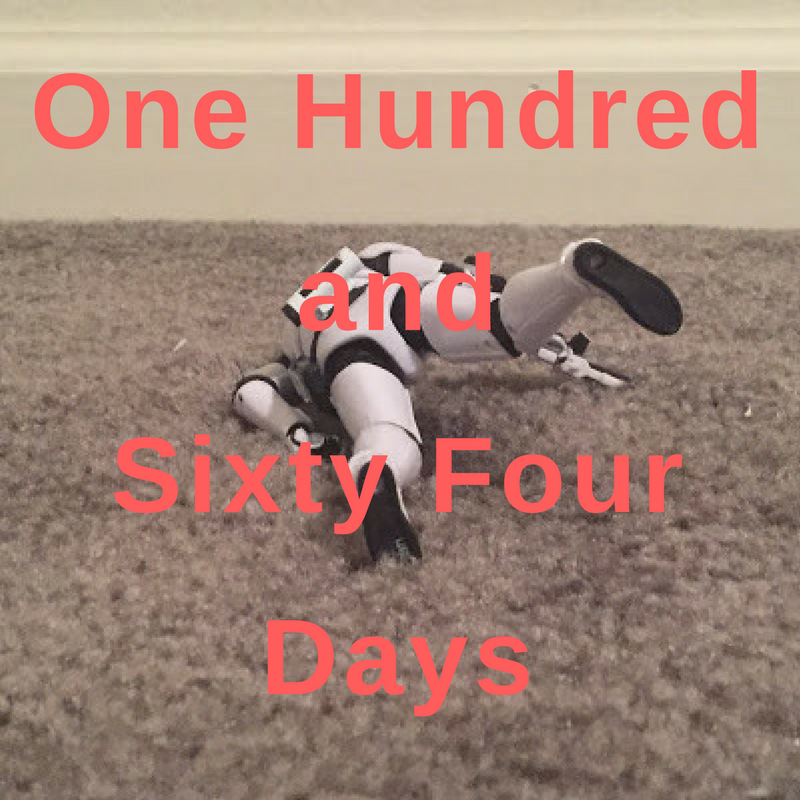Part Two: Apocrypha

Hellraiser: Inferno (2000)
Crap, crap, crap.
The first straight-to-video installment, and not a good sign for the future of the franchise. The plot is pretty simple: there's an asshole cop who finds a puzzle box. He opens the puzzle box. Nothing happenes, but over the next few days things keep getting weirder. Finally, the shock twist at the end of the movie reveals that (SPOILER!) he's actually been in hell the entire time, which is something that everyone knew since the twenty-minute mark.
At its core, there's a not-bad idea for a movie here - basically, an asshole cop gets tormented and by the end of the movie you realize he really does kind of deserve it. But, as with III and IV, in order to tell the story the filmmakers want to tell, they have to mangle the mythos beyond recognition. Pinhead doesn't torment people because they're bad and deserve to be punished - he torments people because they fell into his clutches, and most often this occurs because, on some level, they wanted to do so. Most of the folks who end up opening the puzzle box are drawn towards it by their obsession and depravity: as we saw in Hellbound, Frank's immoral sexual obsessions define the nature of his torment in Hell. But there is no moral element involved in the formula, and the end of Inferno leaves the viewer with the strong impression that the cop is being punished because he is bad, and not merely, as with the early films, as an incidental fact relating to the circumstances of his opening the gateway to Hell. The moral element may seem like a fine distinction to draw, but the essential amorality of the Cenobites motivation is crucial to the franchise's early success. It's the primary reason why they're so imposing - so disturbingly inevitable - in the first two movies, and why their later descent into cackling matinee villains is very unconvincing.
Incidentally, this is the first Hellraiser film to feature CGI Cenobites, and they look horrible. The only reason this film even gets a single puzzle box is that as bad as it is, it's still better than Hellworld.


Hellraiser: Hellseeker (2002)
Not bad, but not great. Hellseeker marks the return of Ashley Lawrence as Kirsty Cotton to the franchise. The movie itself is something of a mess - like Bloodlines, it tries to tell a complicated story in a non-linear fashion, and also like Bloodlines it trips over the large gap between ambition and execution. I can't honestly say I remember a lot about it, except my surprise at the fact that somewhere between Hellbound and Hellseeker Kirsty because really cold-blooded - she kills, like, five people here. It also seemed kind of a big coincidence that she would get married to a guy who would just happen to find a puzzle box - in the Hellraiser universe those things must be like the old AOL CD-ROMs that used to be glued into all the magazines.
(Incidentally, for those with long memories, it's been established that there are Lemarchand puzzle boxes in the Marvel Universe - the first issue of Terror, Inc. shows the titular protagonist playing with a puzzle box before being told in no uncertain terms to put it down.)
Not really a lot more to be said - it looks pretty nice - these straight-to-video films have surprising high production values. This is also the first of these straight-to-video joints to be directed by Rick Bota, who would also direct the next two. He's about as flavorless a director as can possibly be imagined, and is blamed by many fans for single-handedly ruining the franchise. I'd blame the weak scripts, myself.



Hellraiser: Deader (2005)
This movie began its life as something totally separate from Hellraiser, and the script was retrofitted to fit the mythos in order for it to be produced. As such, it plays exactly as you'd expect any movie that started life independently of a franchise only to be shoehorned into said franchise after the fact. There are some nice setpieces throughout - including a particularly effective knife-in-the-back scene - but overall not very compelling. You get the feeling that trying to tie the original idea into Hellraiser resulted in the loss of quite a bit of the original idea's impact. The tangential mythos connection is fairly vague and never really defined very well - I defy you to watch this film and tell me in what way it actually is a Hellraiser film, other than the fact that it's got about ten minutes of Pinhead.
The only element that sets this apart from the other STV installments is that it looks gorgeous. It was filmed on location in Bucharest and the cinematography, by Vivi Dragan Vasile, is pretty astounding. They get the most out of the surrounding, and the decaying post-Soviet architecture and ruined industrial landscape is appropriately creepy.
Also, it must be mentioned that lead actress Kari Wuhrer is not exactly hard on the eyes. Incidentally, she played Abigail Arcane on the live-action Swamp Thing TV show, so there's your gratuitous nerd connection. (And, hopefully, a link from Mike.)




Hellraiser: Hellworld (2005)
And this is the nadir.
Hellworld was an attempt to reinvigorate the formula by making some kind of meta-statement - remember when meta-horror was the "big thing"? Like New Nightmare and Scream and many other better movies, Hellworld takes place in the "real" world where the Hellraiser films are just that, films, in addition to being an addictive online RPG. (The moment I said it took place in the "Real" world you probably guessed what the "surprise" twist at the end actually is.) A bunch of kids get obsessed with the game. One of them dies. The kid's father sets one of those insanely intricate revenge schemes into motion that you can only imagine working in a movie or an episode of Scooby-Doo, with the kids running around a huge mansion hopped up on psychoactive drugs thinking that the Cenobites are chasing them.
But they're not, it's just Lance Henriksen. Yeah, this is one of those examples of a late-entry franchise film bringing in an actor famous from another genre franchise in the hopes of creating some kind of resuscitating "synergy" - and it works here about as well as you'd expect, which is, not at all. But fun for all the Millenium fans in the house, i.e., my parents. (It's a well-established scientific fact that my parents are the only people who actually liked Millenium.)
This is horrid in every conceivable way. It finally finishes the slow transformation that began with III, of turning Hellraiser into a by-the-numbers slasher series, featuring a maniac chasing young, nubile teens around a haunted house with a knife. Worse of all, it ends with an absolutely unnecessary homage to The Vanishing, a movie I didn't particularly care for but which is still seventy-bazillion times better than this pile of steaming shit. (But, I guess, that means the sequence in Kill Bill where Uma Thurman gets buried alive is also an homage to The Vanishing? Unless there's another famous "buried alive" movie I'm forgetting.)
And, hah! There's still the shocking surprise twist ending, wherein Lance Henrikson, distraught over the failure of his plan to avenge his son, picks up one of the box props he had purchased in his revenge scheme, finds himself strangely drawn to the puzzle (SPOILER!), and subsequently opens up a real gateway to Hell, out if which pours Pinhead and his latest interchangeable desultory henchmen. That would qualify as a shocking twist if every single person on the planet hadn't seen it coming from the moment the movie's premise was announced in a press release.
It's a pretty low note on which to end the franchise. But then, considering the fact that the film franchise basically consists of two excellent films and six sequels of varying craptitude it was probably too much to expect anything different at such a late date.

So that's all she wrote, until this supposed remake gets made. I was excited about the remake when Barker was attached. Reportedly, he had responded to the idea with enthusiasm, and even wrote a forty-odd-page treatment for the proposed film. From the sound of it, he saw it as a chance not necessarily to "re-do" the original, but to play around with some alternate ideas and concepts that he couldn't pull off in 1987 with a shoestring budget. The last I heard his treatment was abandoned in favor of a script to be written by the guys who won the third season of Project: Greenlight and wrote Saw IV and V.
I would guess this happened for two reasons: one, Barker's treatment was probably more disturbing than the studio wanted for what could potentially be a franchise-reviving tentpole feature; and two, as such it was probably more expensive than they required. Horror films are a low-risk, relatively low-reward enterprise whose profit margins are dictated by the proportional size of their budgets: Saw V cost $11 million to make and took in $52 million. Do the math: an ambitious dark-fantasy horror film that cost even so much as $30 million to make - chump change for some Katherine Heigl rom-com - would probably be too much of a risk for any horror studio to take.
As you can imagine, I'm not particularly optimistic about these developments. But if you've gotten this far, you know I'll still be there, probably on opening day, if for no other reason than the fact that I've already proven myself to be a masochist of positively Hellish proportions.
But the good news - there is good news - is that Barker is planning a return to Hellraiser after all, just not on film. His next non-childrens' book is purportedly a return to Hell - entitled The Scarlet Gospels - featuring Pinhead as well as Harry D'Amour from "The Last Illusion", Everville, and the Lord of Illusions film. Of course, since it was first announced the project has been pushed back by Barker a number of times, so it's likely we won't see it anytime soon. But still. It'll happen one of these days.
(Of course, I say the same thing about an ALF revival, so there's that.)





No comments :
Post a Comment